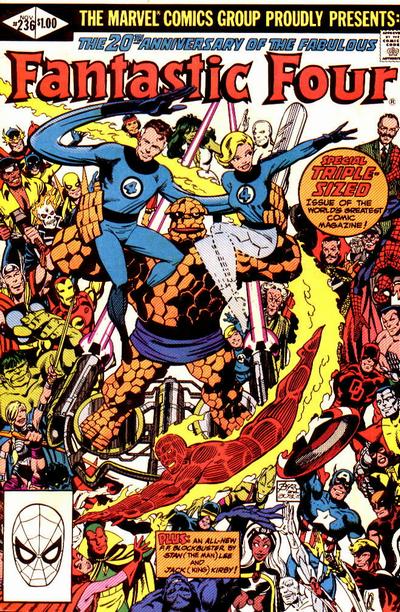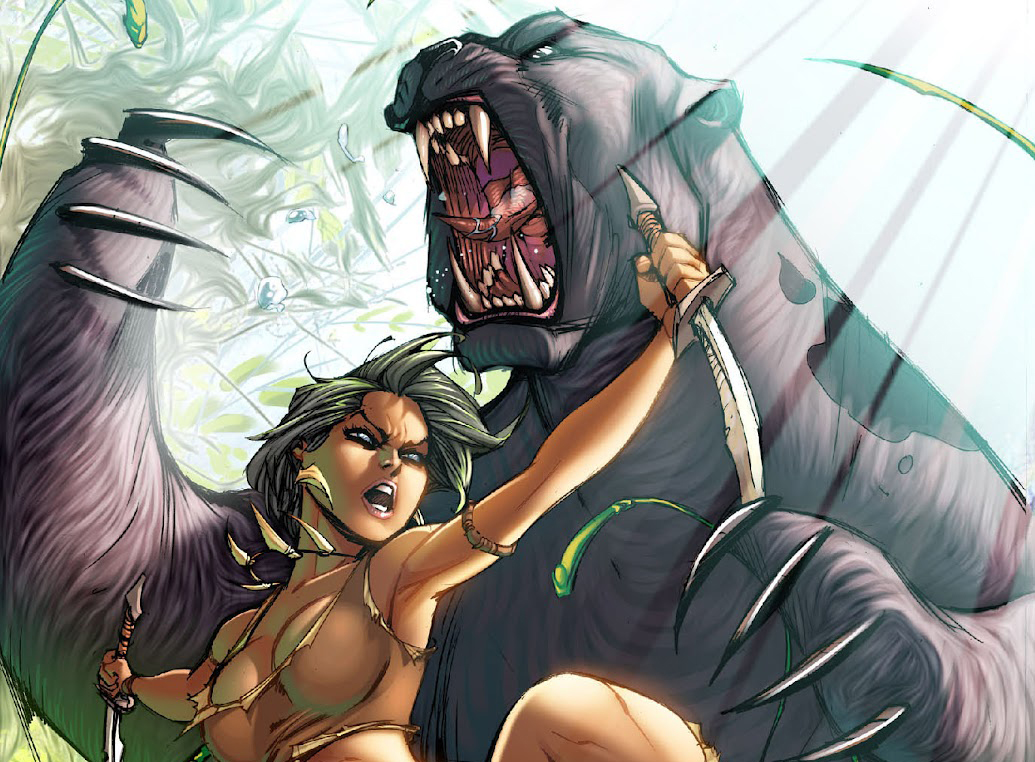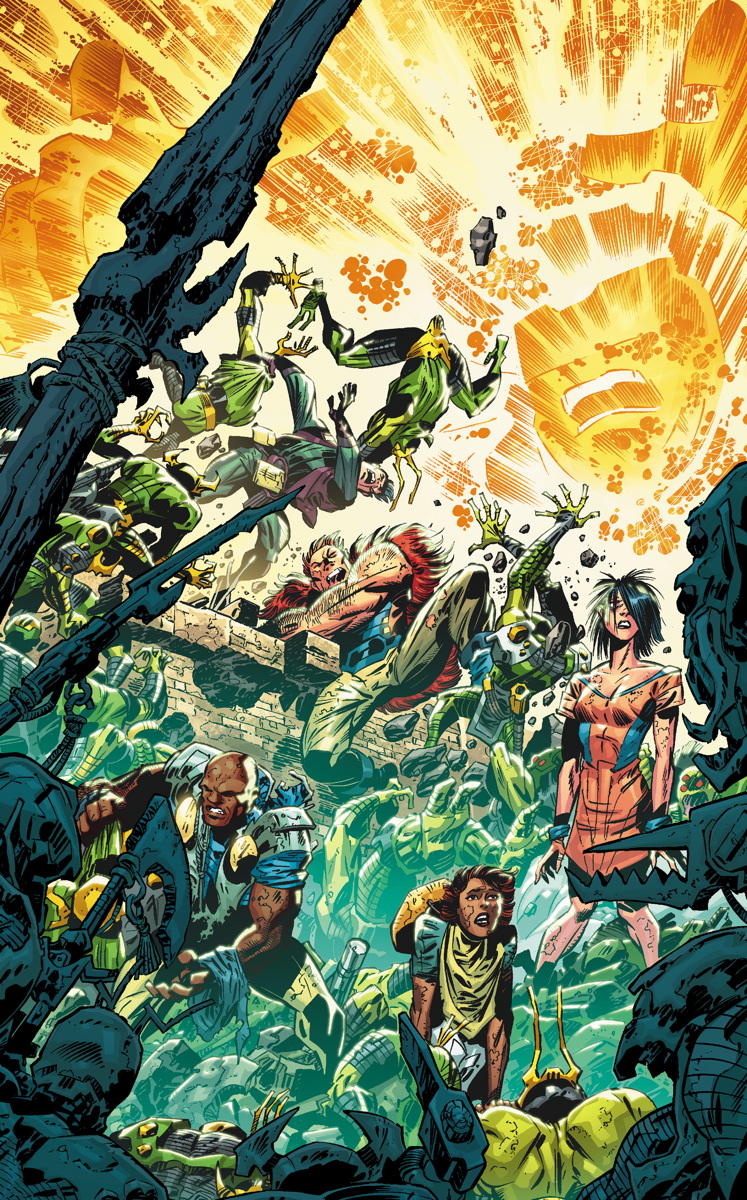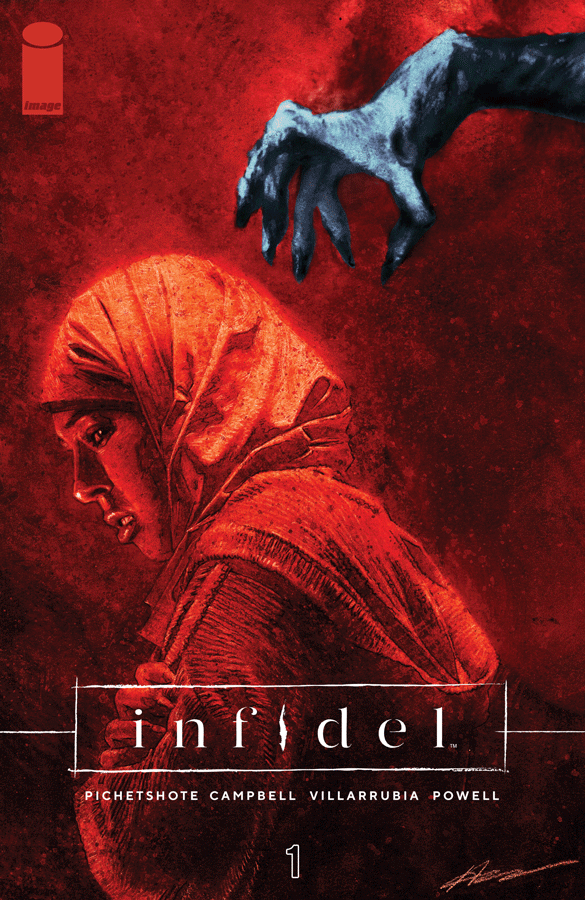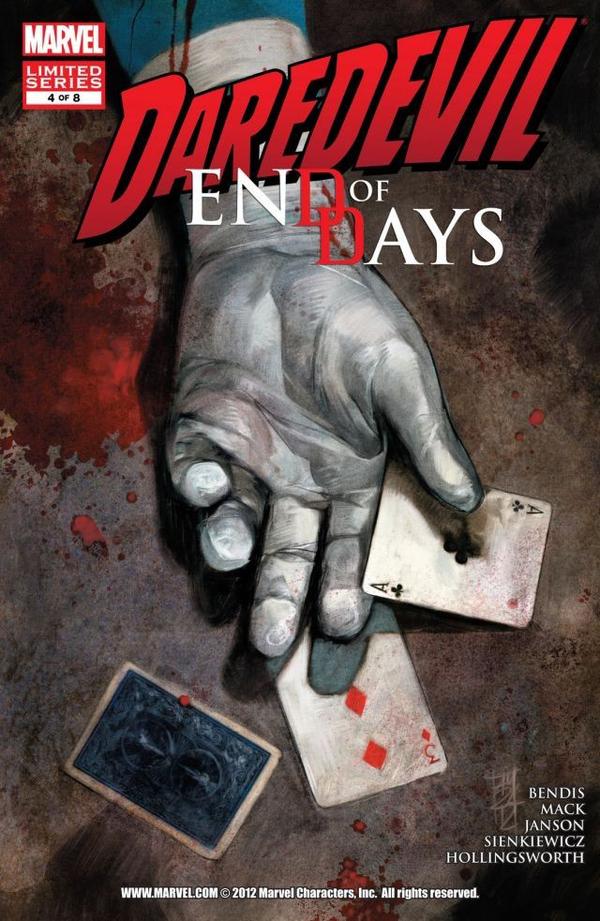
Daredevil: End of Days #4 (of 8)
Written by Brian Michael Bendis & David Mack
Pencils by Klaus Janson
Art by Bill Sienkiewicz (w/ guest Alex Maleev)
Colors by Matt Hollingsworth
Review by Joey Braccino
We’ve reached the mid-point Bendis and Mack’s dystopic Daredevil: End of Days. Since Matt Murdock’s brutal murder at the hands of his arch-nemesis, Bullseye, on the first pages of issue #1, reporter Ben Urich has been desperately seeking a resolution to the question of Daredevil’s last word: “Mapone.” Over the last few issues, Urich has confronted several major Marvel players from Murdock’s past in the hopes of finding answers, but he’s just been confronted with more questions and a string of mysterious red-headed, fatherless children. In issue #4, Bendis and Mack take Urich further down the rabbit hole, starting with a trashed hotel room and a dead Bullseye.
Despite the fairly recurrent plot structure used in the series—Urich gets a tip, the tip takes him to some Marvel hero who’s in retirement, the tip doesn’t pan out, Urich mopes around until the next tip—each and every issue is filled with enough emotional resonance and mystery to keep readers turning the page. Bendis and Mack return the Daredevil brand to the crime-procedural mode that made the Marvel Knights run on the character one of the best-selling books in the early 2000s. By using Urich as the main character (as well as murdering our tights-wearing hero back in the first issue), Bendis and Mack can tell the story from the grounded perspective of an ordinary person. This adds a welcome layer to the book; instead of simply being about “mapone,” Daredevil: End of Days becomes Bendis and Mack’s final meditation on why Matt Murdock put on the suit to begin with, despite the pain, suffering, and torment it brought upon him and his loved ones.
I won’t go too much into the plot here. Suffice it to say that the initial crime-scene investigation and the subsequent revelations about the circumstances of Bullseye’s death are horrifying and gut-wrenching. The bleakness of the sequences not only illustrates the psychosis of Bullseye and the resolve of Urich, but also allows Bendis and Mack to provide some context of the current state of the Marvel Universe in this dystopian future. Keep your eyes peeled for advertisements in the background of some of the panels and for some indirect references to other heroes. Things are rotten in the state of Marvel.
And Klaus Janson captures all of those minute details perfectly. His scratchy pencils resonate with the gloomy mood of the script, and the art pieces by Sienkiewicz and Maleev (though the former doesn’t have much to do this issue) embellish the book at key moments. Matt Hollingsworth is one of Marvel go-to colorists. I have loved his current work on Hawkeye, which makes use of a simple color palette applied vibrantly over David Aja’s solid pencils. With Daredevil: End of Days, however, Hollingsworth adjusts his style to accommodate Janson’s thin pencils, and the final product, though it maintains the simple palette, produces a more muted result. Again, this style perfectly complements both Janson’s atmospheric intention and Bendis and Mack’s script. The artwork in this book alone is worth the price of admission.
Verdict
Buy it. Bendis and Mack are telling one heck of a Daredevil story, even with out the eponymous hero in the book. For fans of Ol’ Hornhead that read or started reading Daredevil during the 2000s (like me), this book provides a feeling of resolution to that story and that mode of storytelling that Mark Waid’s current (brilliant) run on the character has tried to turn on its head. And Klaus Janson is just killing it on art.


